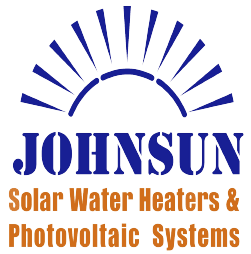PV FAQ
The main difference between the two types of systems is the way the exported energy is credited to the user. In the case of Net-Metering systems the exported energy is credited to the users EAC Bill as kWh and is subtracted from the consumed kWh’s. The user only pays the difference between imported and exported energy. In the case of Ne-Billing systems the exported energy is credited in Euro based on the current avoidance cost for the Bill period. The avoidance cost is the price per kWh as determined by the EAC for each billing period and corresponds to the cost of production per kWh by the EAC.
Net-metering is the current scheme that allows residential and commercial consumers to install a PV system to save energy from their electricity needs. The energy produced by the PV system is either consumed directly, Self-consumption, (if there is electricity need in the building at the time of production), or exported to the grid. The exported energy is the subtracted in KWh’s on the electricity bill. In the case where the exported energy is greater than the imported energy from the Grid, the excess balance is carried forward to the next electricity bill. All the excess is carried forward for up to one year. Any excess credit present on bills ending February or March are not carried forward. The maximum system size allowable for single phase residences is 4.14kWp. All 3-phase residences installing PV systems above 3kWp are required to have 3-phase inverters.
The required area for a PV system installed on a tiled roof is approximately 5-6m² per kWp. The area required for flat roofs is approximately 7.5-10m² per kWp. If there are obstacles or objects casting shadows on the system, then the area required will be greater. For example, a system of 5kW would require about 25-30².
The maximum system size for a residential/commercial Net-Metering PV system is 10kWp. All systems above 10kWp are required to be under the Net-Billing Scheme.
There are various ways of fixing PV systems depending on the type of roof installed upon. For tiled roofs the most common fixing method is by fixing anchors underneath the tiles and attaching aluminium rails to support the PV panels. For flat roofs, depending on the roof construction, the aluminium support structure is either fixed directly to the roof using epoxy and stainless-steel anchors or using a concrete ballast system.
Currently subsidies are only available for residential Net-Metering PV systems. The current subsidy is €250 per kWp installed with maximum subsidy amount of €1000. Consumers falling under the Vulnerable Consumer category are entitled to a subsidy of €900 per kWp with maximum subsidy of €3600.
Stand-alone PV systems are used in areas where there is no electricity grid available. These types of systems are ideal for small holiday houses in remote areas. In addition, stand-alone systems can be used for pumping applications or powering security and lighting systems. These types of systems are designed based on the customer’s needs and can be combined with generators to provide full autonomy.
ST FAQ
The ideal solar thermal system size for a residence depends on the number of inhabitants. For 2-4 persons an 150Ltr system is recommended, for 4-6 persons 200Ltr system and 6-8 250Ltr system is ideal.
In high altitude areas with high possibility of frost we recommend closed-loop solar thermal systems with anti-freeze liquid in the closed loop for frost protection.
Currently the only available subsidy for Solar Thermal systems is for replacing or installing new systems on households with building or town-planning permits prior to 21/12/2007. A complete system comprising of solar collectors and hot water storage tank is eligible for €350 subsidy. For solar thermal collectors only the subsidy amount is €175.
Full monitoring and control of our solar thermal systems is achieved with our Aqualoop hot water controller. Aqualoop can be provided directly integrated in new systems or as a retrofit for existing systems. Installation for retrofit systems is very easy and can be performed by any qualified electrician. No additional wiring is required. Control and monitor the water temperature and set schedules using the dedicated Aqualoop app.
Our company can provide solar thermal collectors and buffer tanks for pool heating. You can easily extend your swimming period from March to November using appropriate pool system sizing.

